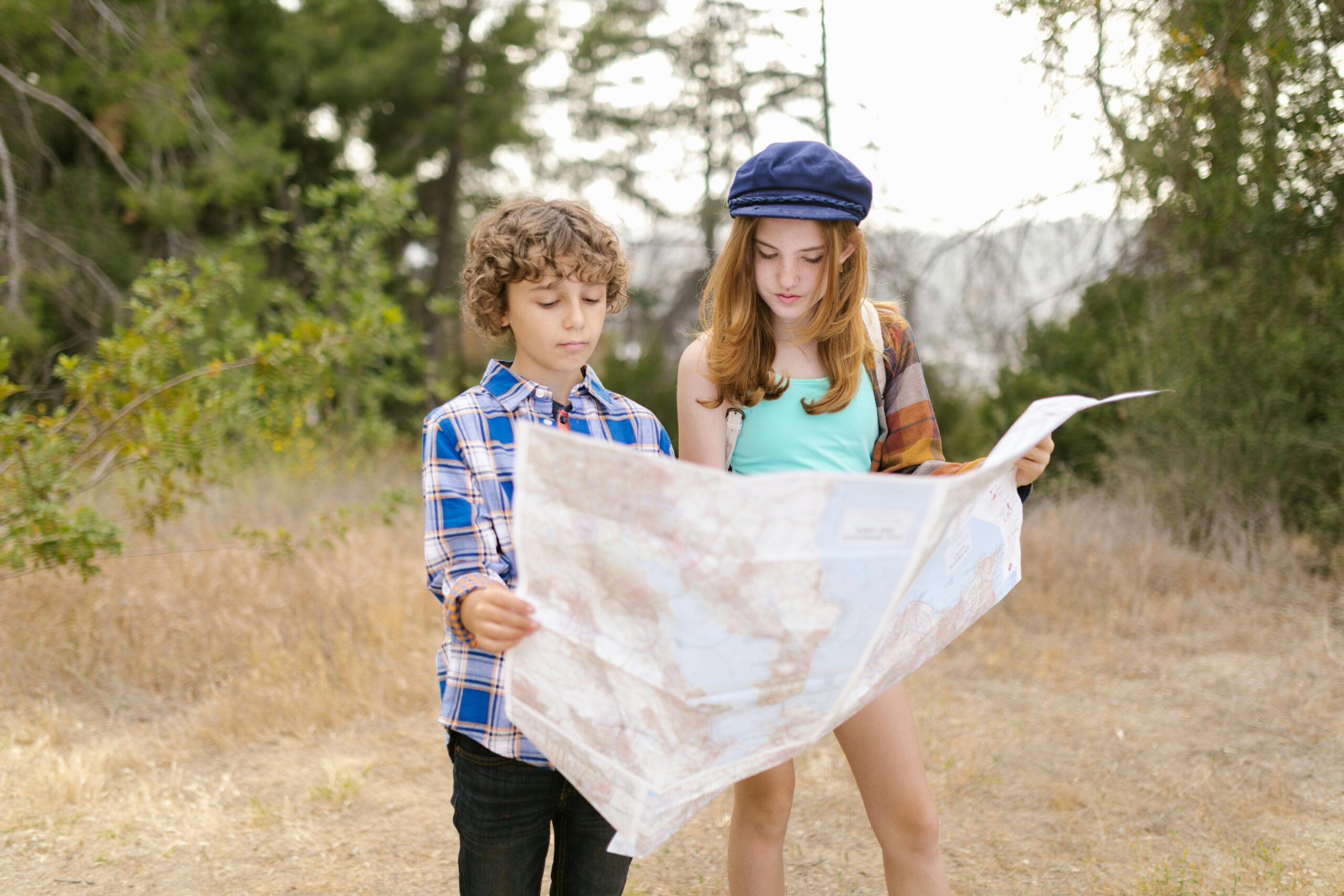Getting lost in the wilderness can be a daunting experience, but with the right navigation skills, you can regain your bearings and find your way back to safety. Whether you’re a seasoned hiker or new to outdoor adventures, learning essential navigation techniques can make all the difference in an emergency. This guide will cover the fundamental skills you need to stay on course and what to do if you lose your way.
1. Stay Calm and Assess Your Situation
The most important thing to do when you realize you’re lost is not to panic. Take a deep breath and follow these steps:
- Stop Moving: Wandering aimlessly can make your situation worse.
- Take Inventory: Check your map, compass, GPS, and any supplies you have.
- Look for Landmarks: Try to identify features like mountains, rivers, or trails that can help orient you.
- Retrace Your Steps: If safe, backtrack to the last known location where you were confident about your position.
2. Use a Map and Compass
A topographic map and a compass are invaluable tools for navigation. Here’s how to use them effectively:
Reading a Map
- Look for contour lines to understand elevation changes.
- Identify major landmarks, such as lakes, peaks, or roads.
- Align the map with your surroundings for proper orientation.
Using a Compass
- Orient Your Map: Place your compass on the map, aligning north on the map with north on the compass.
- Take a Bearing: Point the compass toward your destination, align the needle with the orienting arrow, and note the degree reading.
- Follow Your Heading: Walk in the direction indicated by your compass while checking landmarks.
3. Natural Navigation Techniques
If you don’t have a map or compass, use natural clues to navigate:
Sun and Shadows
- The sun rises in the east and sets in the west. If it’s midday, the sun will be south in the Northern Hemisphere and north in the Southern Hemisphere.
- Use shadows to determine direction: place a stick upright in the ground and mark the tip of the shadow. After 15 minutes, the shadow will move; the first mark is west, and the second is east.
Star Navigation
- At night, use the North Star (Polaris) in the Northern Hemisphere. It remains fixed in the sky, indicating north.
- In the Southern Hemisphere, locate the Southern Cross constellation to estimate south.
Following Water
- Rivers and streams usually flow downhill and often lead to larger bodies of water, roads, or settlements. Follow them cautiously if you are unsure of your direction.
4. Using Technology for Navigation
GPS Devices and Smartphone Apps
- Handheld GPS Units: Devices like Garmin GPSMAP provide precise coordinates and can help you track your route.
- Navigation Apps: Apps like AllTrails, Gaia GPS, and Google Maps (offline mode) can assist in mapping your course.
- Battery Conservation: Keep your phone on airplane mode to preserve battery life. Carry a portable power bank as a backup.
Emergency Devices
- Personal Locator Beacons (PLBs): Devices like the Garmin inReach Mini send SOS signals and allow two-way messaging in emergencies.
- Whistles and Signal Mirrors: Three whistle blasts or mirror flashes signal distress in the wilderness.
5. What to Do If You Can’t Find Your Way
If you’re lost and unable to navigate back, follow the S.T.O.P. method:
- Stay put: Avoid unnecessary movement to conserve energy.
- Think: Assess your situation and any available resources.
- Observe: Look for signs of trails, water sources, or potential rescue routes.
- Plan: Decide whether to wait for rescue or move toward safety.
Additional Tips:
- Find high ground to spot landmarks or potential help.
- Build a signal fire or arrange rocks in a visible pattern to attract attention.
- Stay hydrated and warm to prevent dehydration and hypothermia.
6. Preventing Navigation Mistakes
The best way to avoid getting lost is to prepare ahead of time. Here’s how:
- Plan Your Route: Study your map and know key landmarks before setting out.
- Mark Your Trail: Use markers, ribbons, or digital waypoints to track your location.
- Hike with a Buddy: Having a partner reduces the risk of navigation errors.
- Check the Weather: Poor visibility due to fog, rain, or snow can disorient even experienced hikers.
Conclusion
Mastering basic navigation skills is essential for any outdoor enthusiast. Whether using a compass, natural signs, or technology, knowing how to find your way when lost can mean the difference between a minor detour and a survival situation. With proper preparation and awareness, you can navigate with confidence and enjoy your adventures safely.
Call to Action:
Have you ever been lost while hiking? Share your experiences in the comments, and don’t forget to subscribe for more wilderness survival tips!




Leave a Reply